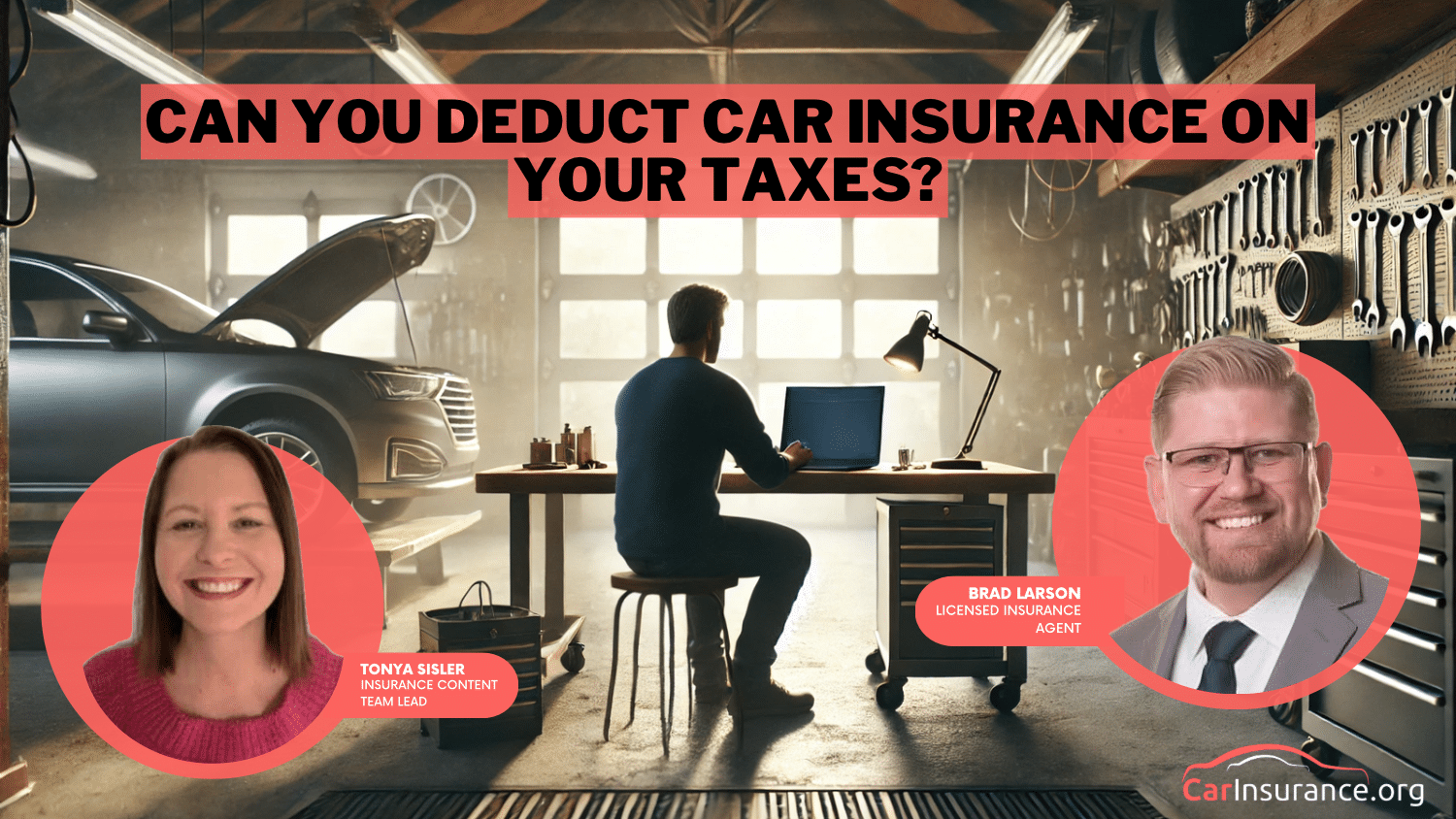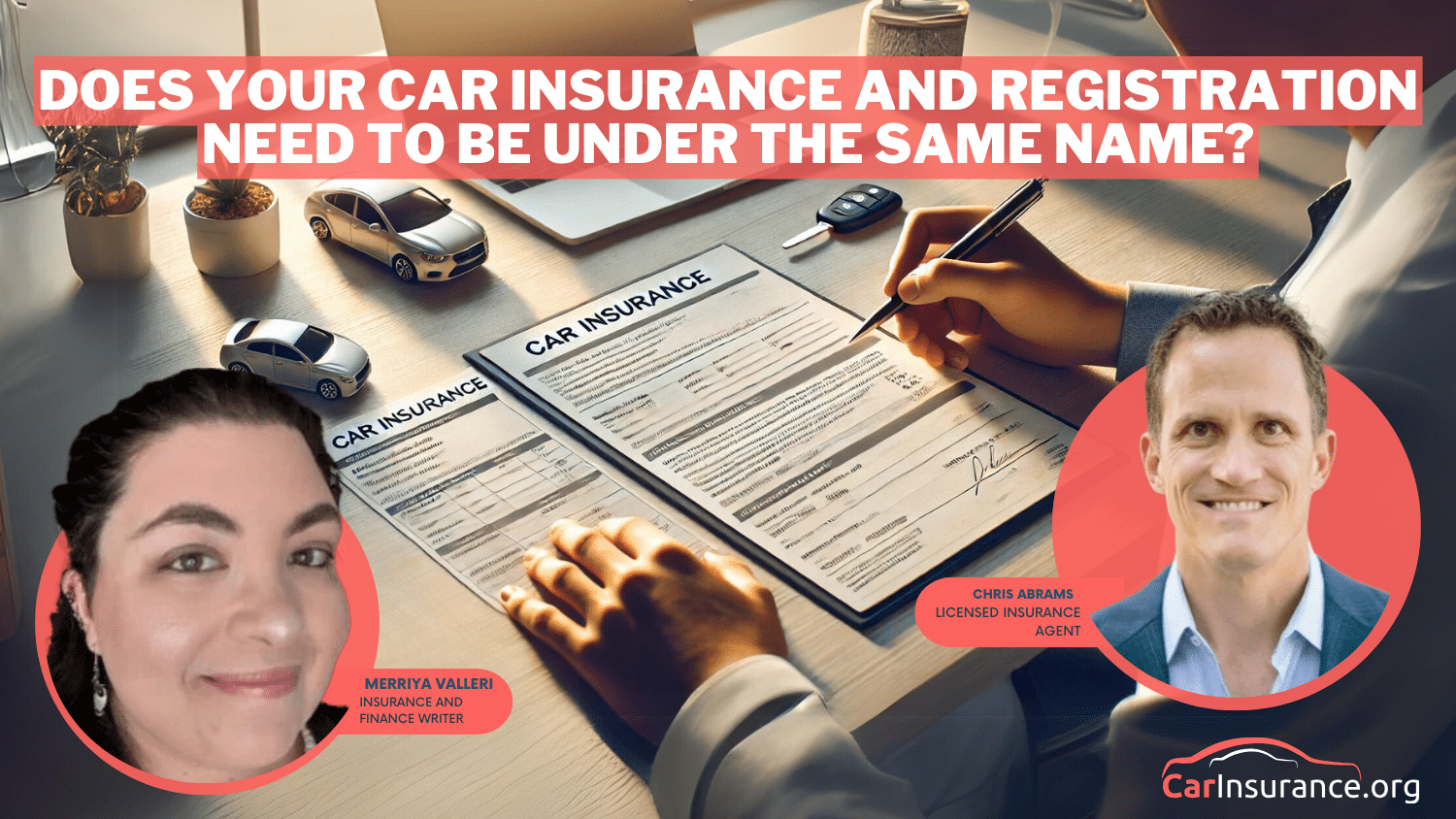What does no fault state mean?
A no fault state requires drivers to file a car insurance claim with their insurer rather than an at-fault driver's insurance company. In addition, no fault states set restrictions on when you can sue an at fault driver for medical expenses. Therefore, drivers are typically required to have PIP coverage in no fault states.
Read more Secured with SHA-256 Encryption




Table of Contents
Table of Contents


Insurance Feature Writer
Rachel Bodine graduated from college with a BA in English. She has since worked as a Feature Writer in the insurance industry and gained a deep knowledge of state and countrywide insurance laws and rates. Her research and writing focus on helping readers understand their insurance coverage and how to find savings. Her expert advice on insurance has been featured on sites like PhotoEnforced, All...
Rachel Bodine


Licensed Insurance Agent
Eric Stauffer is an insurance agent and banker-turned-consumer advocate. His priority is educating individuals and families about the different types of insurance coverage. He is passionate about helping consumers find the best coverage for their budgets and personal needs. Eric is the CEO of C Street Media, a full-service marketing firm and the co-founder of ProperCents.com, a financial educat...
Eric Stauffer
Updated March 2025
- A no fault state requires drivers to file a claim with their own insurance company after an accident regardless of fault
- Some states are strictly no fault states, while others are choice no fault states that allow drivers to choose between no fault insurance policies and tort liability policies, and still, others are add-on states that combine no fault and tort liability
- No fault states typically require that drivers have PIP coverage in addition to their liability insurance
Each state has car insurance laws that categorize it as a no fault, choice no fault, add-on, or tort liability state. Depending on which state you live in, there is a certain way that you should file claims and receive compensation for damages or injuries caused by another driver.
What does no fault state mean? Read below to understand what a no fault state is, how car insurance works in no fault states, and what kinds of car insurance you must have in no fault states.
Enter your ZIP code into our free quote comparison tool above to make sure you’re getting the best no fault state car insurance rates.
What does no fault state mean?
No fault states require that drivers involved in an accident file a claim with their own insurance company, regardless of who is at fault for the accident.
So, who pays for car damage in a no fault state? No fault states will still assign blame to one of the drivers, which means that the at-fault driver’s liability insurance will cover damages to your vehicle. The main difference between no fault and tort liability states is who will pay for medical expenses. No fault states typically require drivers to carry personal injury protection (PIP) insurance to pay for medical expenses.
But can you sue in a no fault state? The short answer is yes, but your injuries will need to meet a verbal or monetary threshold. For example, your state may require your injuries to be categorized as “disfigurement” or your expenses to exceed a specific amount before you can sue the at fault driver.
In choice no fault states, drivers can choose between a no fault car insurance policy and a tort liability policy, in which they will file claims according to the rules for the type they choose. For example, if they choose a no fault policy, they file claims with their insurer, while they file claims with the at fault driver’s insurance company if they choose a tort liability policy.
In add-on states, car insurance laws mix no fault and tort liability. Drivers must file a claim with their insurer like in no fault states, but they have no restrictions on suing the at fault driver like in tort liability states.
Free Insurance Comparison
Compare Quotes From Top Companies and Save
Secured with SHA-256 Encryption
Which states have no fault laws?
Below is a list of no fault states, choice no fault states, and add-on states.
No fault states include:
- Florida
- Hawaii
- Kansas
- Massachusetts
- Michigan
- Minnesota
- New York
- North Dakota
- Puerto Rico
- Utah
Choice no fault states include:
- Kentucky
- New Jersey
- Pennsylvania
Add-on states include:
- Arkansas
- Delaware
- Maryland
- New Hampshire
- Oregon
- South Dakota
- Texas
- Virginia
- Washington
- Wisconsin
The rest of the states have tort liability car insurance laws.
What types of car insurance is required in no fault states?
The types of car insurance required in no fault states are typically similar to those needed in tort liability states, with one exception. No fault states auto insurance requirements generally include PIP coverage.
Let’s take a look at the car insurance requirements for each state:
| State | Insurance required | Minimum liability limits |
|---|---|---|
| AL | BI & PD Liab | 25/50/25 |
| AK | BI & PD Liab | 50/100/25 |
| AZ | BI & PD Liab | 15/30/10 |
| AR | BI & PD Liab, PIP | 25/50/25 |
| CA | BI & PD Liab | 15/30/5 |
| CO | BI & PD Liab | 25/50/15 |
| CT | BI & PD Liab, UM, UIM | 25/50/20 |
| DE | BI & PD Liab, PIP | 25/50/10 |
| DC | BI & PD Liab, UM | 25/50/10 |
| FL | PD Liab, PIP | 10/20/10 |
| GA | BI & PD Liab | 25/50/25 |
| HI | BI & PD Liab, PIP | 20/40/10 |
| ID | BI & PD Liab | 25/50/15 |
| IL | BI & PD Liab, UM, UIM | 25/50/20 |
| IN | BI & PD Liab | 25/50/25 |
| IA | BI & PD Liab | 20/40/15 |
| KS | BI & PD Liab, PIP | 25/50/25 |
| KY | BI & PD Liab, PIP, UM, UIM | 25/50/25 |
| LA | BI & PD Liab | 15/30/25 |
| ME | BI & PD Liab, UM, UIM, Medpay | 50/100/25 |
| MD | BI & PD Liab, PIP, UM, UIM | 30/60/15 |
| MA | BI & PD Liab, PIP | 20/40/5 |
| MI | BI & PD Liab, PIP | 20/40/10 |
| MN | BI & PD Liab, PIP, UM, UIM | 30/60/10 |
| MS | BI & PD Liab | 25/50/25 |
| MO | BI & PD Liab, UM | 25/50/25 |
| MT | BI & PD Liab | 25/50/20 |
| NE | BI & PD Liab, UM, UIM | 25/50/25 |
| NV | BI & PD Liab | 25/50/20 |
| NH | FR only | 25/50/25 |
| NJ | BI & PD Liab, PIP, UM, UIM | 15/30/5 |
| NM | BI & PD Liab | 25/50/10 |
| NY | BI & PD Liab, PIP, UM, UIM | 25/50/10 |
| NC | BI & PD Liab, UM, UIM | 30/60/25 |
| ND | BI & PD Liab, PIP, UM, UIM | 25/50/25 |
| OH | BI & PD Liab | 25/50/25 |
| OK | BI & PD Liab | 25/50/25 |
| OR | BI & PD Liab, PIP, UM, UIM | 25/50/20 |
| PA | BI & PD Liab, PIP | 15/30/5 |
| RI | BI & PD Liab | 25/50/25 |
| SC | BI & PD Liab, UM, UIM | 25/50/25 |
| SD | BI & PD Liab, UM, UIM | 25/50/25 |
| TN | BI & PD Liab | 25/50/15 |
| TX | BI & PD Liab, PIP | 30/60/25 |
| UT | BI & PD Liab, PIP | 25/65/15 |
| VT | BI & PD Liab, UM, UIM | 25/50/10 |
| VA | BI & PD Liab (9), UM, UIM | 25/50/20 |
| WA | BI & PD Liab | 25/50/10 |
| WV | BI & PD Liab, UM, UIM | 25/50/25 |
| WI | BI & PD Liab, UM, Medpay | 25/50/10 |
| WY | BI & PD Liab | 25/50/20 |
As you can see in the table above, most states require you to carry liability coverage. This helps pay for damage to other people’s property and other people’s injury if you are at fault in an accident. In addition, in some no fault states, you may be able to get residual bodily injury liability insurance that can help cover other people’s medical expenses if you are sued after an accident.
Since liability insurance does not cover your medical expenses, no fault states require that all drivers carry PIP insurance to cover their medical expenses after an accident. Let’s look at how much PIP coverage each state requires:
PIP Coverage Amount Requirements by State
| State | Required Amount of PIP Coverage |
|---|---|
| Florida | $10,000 |
| Hawaii | $10,000 |
| Kansas | $4,500 |
| Kentucky | $10,000 (drivers can reject PIP in writing) |
| Massachusetts | $8,000 |
| Michigan | $50,000 |
| Minnesota | $40,000 |
| New Jersey | $15,000 |
| New York | $50,000 |
| North Dakota | $30,000 |
| Pennsylvania | $5,000 |
| Utah | $3,000 |
PIP insurance will cover your medical expenses plus any medical expenses incurred by your passengers. In addition, it can cover other costs, such as lost wages or funeral expenses.
Some no fault states also require drivers to carry uninsured/under-insured motorist (UM/UIM) coverage, which can help cover your medical expenses if you use all of your PIP coverage or the at-fault driver’s liability coverage.
Suppose you finance your vehicle with a lease or loan. In that case, you may also be required to carry collision and comprehensive coverage, which covers damages to your car after an accident or other occurrence.
What else should I know about no fault insurance states?
The most significant consideration to make when you live in a no fault state is what type of no fault laws your state has. If it is a choice no fault, you can choose to opt out of the no fault laws, and if it is an add-on state, you should be aware of your rights when seeking compensation from an at fault driver after an accident.
Another thing to consider is how much PIP or other insurance you should have. While your state will have a minimum amount, you may want to get more coverage if you’re worried about high medical bills. You may also want to consider having other non-required insurance types, such as MedPay coverage.
If you live in a no fault state, enter your ZIP code into our free quote comparison tool below to ensure you get the coverage you need.
Get a FREE Quote in Minutes
Insurance rates change constantly — we help you stay ahead by making it easy to compare top options and save.



